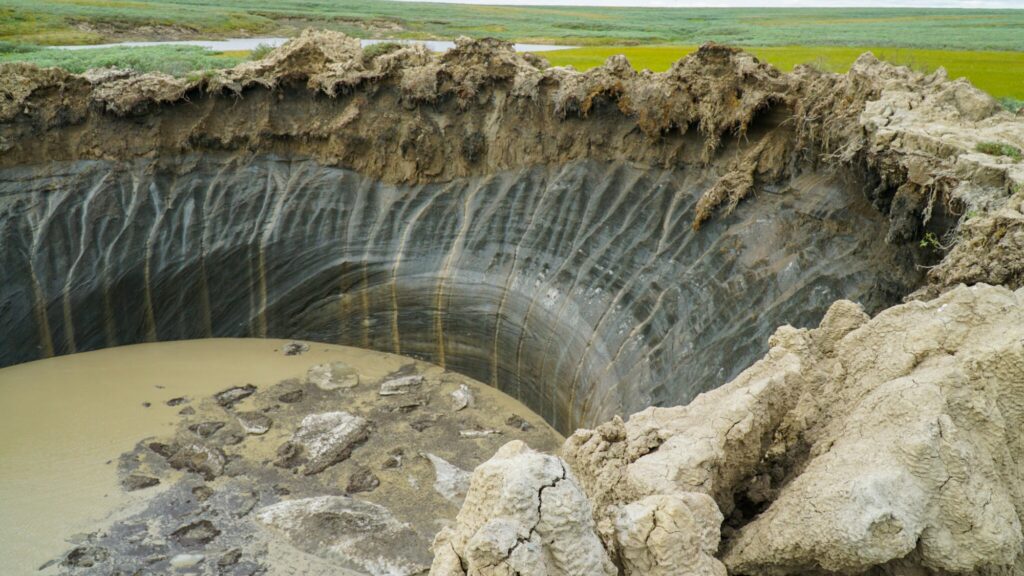For the past decade, craters have formed in the icy terrain of Siberia’s Yamal Peninsula, first discovered in 2014. These holes are linked to methane explosions caused by temperature changes and unique underground conditions. Researchers believe these phenomena can shed light on how rising global temperatures interact with frozen ground, raising environmental concerns as the land changes.
The explosions result from the destabilization of methane hydrates, which are usually stable in permafrost. Climate change disrupts this stability, leading to violent gas releases. A study by the University of Cambridge and the Spanish National Research Council explored the mechanisms behind these explosions, concluding that pressure buildup caused by melted water from the active layer of permafrost is a key factor.
As Arctic temperatures rise, the active layer deepens, causing more water to infiltrate salty underground pockets called cryopegs. This creates excessive pressure that can crack the permafrost, ultimately triggering rapid methane releases and forming craters. The phenomenon is expected to occur more frequently as the Arctic continues to warm, amplifying greenhouse gas emissions and accelerating climate change.
The unique geology of the Yamal Peninsula makes it especially prone to these explosive events. Researchers are working to understand the implications of these craters for climate stability and whether similar conditions may arise in other permafrost areas. Overall, the findings highlight the urgent need to understand how permafrost interacts with climate dynamics amid ongoing warming, as these events could signify broader environmental changes beyond Siberia.
Source link


